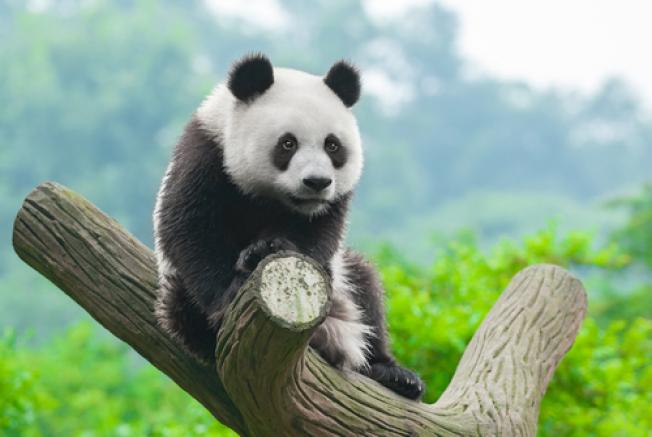The Secret Lives of Pandas: Discovering China’s National Treasure
In the vast expanse of China lies a hidden gem of the animal kingdom—the giant panda. Known for its elusive nature, this black-and-white bear survives in the remote, rugged landscapes of China, away from human interference.

In the vast expanse of China, a country marked by humid monsoon summers and bitter Arctic winds in winter, lies a diverse ecosystem. Two-thirds of the land is covered with mountains and deserts, home to some of the world's rarest creatures. Among them is the panda, a wildlife marvel that prefers secrecy to the touch of human civilization.
In 1869, a French explorer reported an extraordinary discovery in China's Mouping Mountains. Taking decisive action, he hired hunters to capture two stunning black-and-white bears. His brother, a zoologist, documented these fascinating creatures, bestowing upon them the name "panda." Proudly, the Chinese embrace the panda as their national symbol, much as Americans cherish the bald eagle.
The first meeting between the Western world and the panda was facilitated by U.S. President Theodore Roosevelt, a nature enthusiast and hunter. Roosevelt hunted the first panda ever brought to the West. The skins of these pandas, acquired during his travels in China, were exhibited at Chicago's Natural History Museum, captivating nature lovers and curious onlookers alike.
Residing in dense bamboo forests on mountainous terrain, pandas prefer solitude and live far from prying eyes. Their elusive nature leaves much about their way of life a mystery. Most of their time is spent among thick bamboo groves, distanced from the world's hustle and bustle. It's a life largely concealed from view.

Pandas primarily feed on bamboo shoots and leaves, thriving in forests with rich plant diversity. This diversity allows them to adapt when one species of bamboo becomes scarce. On average, pandas consume about 30 pounds of bamboo daily, which is about 90% water—the reason they need every solid gram. Occasionally, pandas will indulge in some meat, savoring a diet of herbs, roots, and fragrant flowers in the spring.
Despite their plant-based diet, pandas have a carnivore's digestive system, more apt for meat than fibrous plants. This inefficiency requires them to dedicate about 10 to 14 hours each day to foraging. They are active both day and night, ensuring their stomachs remain full. The panda's tooth structure is uniquely adapted for their tough diet, with molars seven times the size of a human's, and they replace their teeth as they grow, similarly to humans.
Pandas can grow considerably large, with adults reaching up to five feet in length and weighing around 200 pounds, though some individuals have tipped scales at nearly 400 pounds. Despite appearances, their fur hardens with age, and they're known to clean themselves by rolling in the dirt.
Loving the cold, pandas delight in ice chunks provided at zoos during hot spells, sprawling out on them with joy. During snowfalls, they frolic like playful children. One scientist once observed a panda sliding downhill, climbing back up, only to slide back down repeatedly.
Panda mothers exhibit supreme dedication to their cubs. They remain by their side in the den for the first month, foregoing food to nurture their offspring. Panda cubs are born defenseless and require vigilant protection from predators like leopards and wild dogs.
A newborn panda weighs a mere 3.5 ounces compared to its massive mother's 220 pounds. Though they grow swiftly, they remain dependent for a long period. It takes about 40 days for their eyes to open, and they can't crawl until they are about a month old.
By seven months, a cub weighs about 22 pounds—over a hundred times its birth weight. At one and a half, they reach 121 pounds, becoming more independent, able to run, climb, and gnaw on bamboo. Despite having powerful jaws capable of crunching tough bamboo, panda mothers gently clutch their cubs, carrying them about with utmost care.
In times of danger or rest, pandas climb trees for refuge. While older pandas become less agile, tree climbing remains a critical skill for young ones. Yet even a seasoned panda won't hesitate to nest on a branch when rest beckons.
As one of the endangered species, pandas face an uncertain future. It's estimated that about 1,000 giant pandas live in the wild, clustered in Sichuan, Xinjiang, and the Tibetan plateau—habitats of bamboo groves spanning altitudes between 8,200 and 13,100 feet. China's government has designated twelve protected areas to safeguard these animals, where hunting is prohibited. These precious pandas live in isolated groups across these reserves, with numbers sometimes reaching up to 200 per location. However, their primary food—bamboo—is both a resource and a threat.
Bamboo, with its myriad species, poses a unique challenge. Pandas typically eat only a few of the many bamboo species available, ignoring others. This limitation poses a dire risk: bamboo can bloom and die off simultaneously after decades. When this happens, as it did in 1972 and again in 1983, when all "arrow bamboo" perished, pandas face starvation risks. Fortunately, concerted efforts by the Chinese government and global wildlife organizations have averted disaster, for now.

